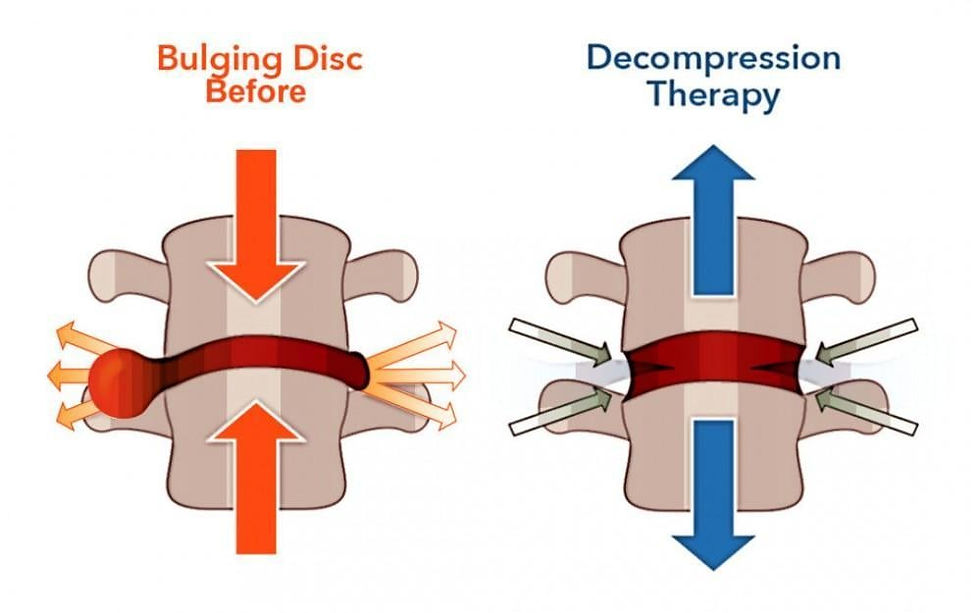Common Conditions Treated with Spinal Decompression (Herniated Discs, Sciatica & More)
- Spinal Decompression Center

- Jun 23
- 2 min read
If you're struggling with chronic back or neck pain, you’re not alone—and you don’t have to live with it forever. Spinal decompression therapy is a non-surgical, drug-free treatment that can relieve pressure on spinal discs and nerves, helping to resolve the root cause of your pain. But what exactly can spinal decompression help with?
Here’s a look at the most common conditions effectively treated with spinal decompression therapy.

1. Herniated or Bulging Discs
One of the top reasons people seek spinal decompression is to address herniated or bulging discs. When the discs between your vertebrae become damaged or slip out of place, they can compress surrounding nerves, causing sharp pain, numbness, or weakness. Spinal decompression gently stretches the spine to create negative pressure, allowing the disc to retract and heal naturally.
2. Sciatica
Sciatica occurs when the sciatic nerve is pinched, often due to a herniated disc or spinal stenosis. It leads to burning, shooting, or tingling pain down one or both legs. Spinal decompression relieves the pressure on the affected nerve roots, helping reduce inflammation and promote long-term relief.
3. Degenerative Disc Disease
As we age, spinal discs naturally lose hydration and height, which can lead to chronic back pain and limited mobility. Spinal decompression can help improve the space between vertebrae, restore better alignment, and reduce discomfort caused by degenerative disc disease.
4. Spinal Stenosis
Spinal stenosis is the narrowing of the spinal canal, which can put pressure on the spinal cord and nerves. This often causes pain, numbness, and cramping in the back, legs, or arms. Spinal decompression can alleviate that pressure and improve nerve function without the need for surgery.
5. Facet Syndrome
The small joints at the back of the spine, called facet joints, can become inflamed or arthritic, resulting in stiffness and pain. Spinal decompression can help take stress off these joints, promoting healing and improving range of motion.
6. Pinched Nerves
Whether caused by disc problems, bone spurs, or tight muscles, pinched spinal nerves can be excruciating. Decompression therapy creates more space around the nerves, allowing them to heal and function properly again.
7. Post-Surgical Back Pain (Non-Fusion Cases)
Some patients who have undergone spinal surgery (excluding fusion) still experience chronic pain. In many cases, spinal decompression can offer relief and help correct underlying structural imbalances contributing to discomfort.
Is Spinal Decompression Right for You?
While spinal decompression can help many people, it isn’t suitable for everyone—especially those with fractures, advanced osteoporosis, or surgical hardware in the spine. A personalized evaluation at The Spinal Decompression Center can determine if this therapy is a good fit for your condition.
Find Lasting Relief at The Spinal Decompression Center
We’re committed to helping you move better, feel better, and live pain-free. If you suffer from any of the conditions above, schedule a consultation to see how spinal decompression therapy could help you return to a more active, comfortable lifestyle.
Call us today or book your appointment online to get started.





Comments